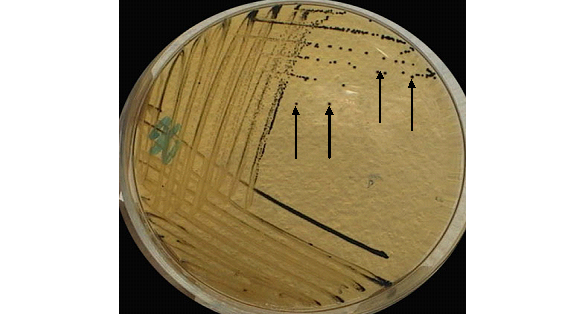All bacterial cells are extremely infinitesimal (i.e. microscopic), and are never visible to the naked eyes. Bacteria exist in different sizes and shapes which may range from 0.1 µm to 0.3 µm wide and 1 µm to 10 µm in length depending on whether they are rod or spherical in shape (Figure 1). Bacteria occur in various shapes. However, most bacteria are spherical in shape (cocci)while others are rod-like in shape (bacillus). The bacteria that assume a spherical shape are generally known as cocci (singular: coccus) while those that assume a rod-like shape are known as bacilli (singular: bacillus). However, bacterial cells generally exist in three forms which are spheres, rods and spirals. Figure 1 shows the various shapes in which a bacterial cell can occur.
BACILLI (RODS)
Bacilli (Rod bacteria) may be long or short, thick or slender in form. These features of rod bacteria are seen when they are viewed microscopically. Rod-like bacteria are usually cylindrical in shape, and they may appear as single cells known as bacillus (plural: bacilli) or bacterium. They can also appear as a double cell called diplococci or diplobacterium, and can also appear in chains called streptobacillus or streptobacterium. Coccobacilli are very short rods that can sometimes be mistaken to be cocci (i.e. spherical bacteria). There is also another group of rod-like bacteria known as fusiform bacteria because they have tapered or pointed ends. Rod-like bacteria can also be curved or bent. Some examples of rod-shaped bacteria include: Corynebacterium, Clostridium, Bacillus, Shigella, Escherichia, Salmonella and Listeria.

SPHERICAL BACTERIA
Bacteria that are spherical in shape are generally called cocci (singular: coccus). Spherical bacteria (which can also be known as oval bacteria because they are not always perfect sphere) may be large or small. They can also group themselves in various ways. Cocci can appear as a single cell (coccus), double cell (diplococcus), or combined as four cells (tetracoccus or tetrad). They can also be in chains (streptococcus) or in bulky form or clusters (staphylococcus). Examples of spherical bacteria include: Streptococci, Staphylococci, and Neisseria.
SPIRAL-SHAPED BACTERIA
Spiral-shaped bacteria can also be called Vibrio, and they are generally known to have shape that looks like a screw or a cork. They are known as spirilla (singular: Spirillum) if the cells are rigid and spirochetes if the cells are undulating and more flexible. Spirilla contain one or more loosed turns while spirochetes contain many coils. Examples of spiral-shaped bacteria include: Vibrio cholerae that causes cholera disease, Treponema, Borrelia and Leptospira.
References
Brooks G.F., Butel J.S and Morse S.A (2004). Medical Microbiology, 23rd edition. McGraw Hill Publishers. USA. Pp. 248-260.
Madigan M.T., Martinko J.M., Dunlap P.V and Clark D.P (2009). Brock Biology of microorganisms. 12th edition. Pearson Benjamin Cummings Publishers. USA. Pp.795-796.
Prescott L.M., Harley J.P and Klein D.A (2005). Microbiology. 6th ed. McGraw Hill Publishers, USA. Pp. 296-299.
Ryan K, Ray C.G, Ahmed N, Drew W.L and Plorde J (2010). Sherris Medical Microbiology. Fifth edition. McGraw-Hill Publishers, USA.
Singleton P and Sainsbury D (1995). Dictionary of microbiology and molecular biology, 3rd ed. New York: John Wiley and Sons.
Talaro, Kathleen P (2005). Foundations in Microbiology. 5th edition. McGraw-Hill Companies Inc., New York, USA.
Discover more from Microbiology Class
Subscribe to get the latest posts sent to your email.




